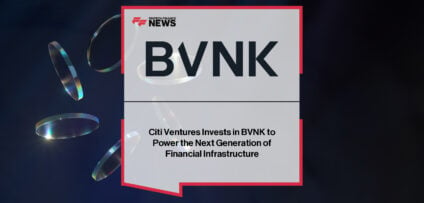Breaking News

Embedded Finance – deep dive
The emergence of embedded finance ushers in a new era for banking operations as well as for how customers and businesses establish and maintain ties with financial services more generally.
The Client Journey
As clients increasingly expect hyper-personalized, seamless end-to-end experiences, any friction in accessing financial solutions becomes less acceptable.
Leveraging the power of ecosystem data and insights generated through artificial intelligence, financial institutions can position themselves to meet their client’s financial needs promptly and effortlessly, wherever and whenever they arise.
Embedded finance empowers traditional banks to connect with clients through the very digital platforms and marketplaces that clients are already accustomed to using.
This integration is facilitated through secure application programming interfaces (APIs), making ecosystems the focal point of a successful business model.

Furthermore, beyond traditional control over product-centric value chains, CEOs now have the opportunity to create significant business value through ecosystem collaborations. Client and business relationships have evolved beyond mere transactions; they have become symbiotic partnerships.
Consumer Banking Preferences: A Changing Environment
The consumer’s preferred methods of interacting with financial institutions have seen a significant change as a result of the digital revolution.

A survey conducted in June 2023 by IBM’s Institute for Business Value, Red Hat, and BIAN reveals that a significant portion of consumers now manage their finances online, with 63% applying for loans, 69% executing investments, and 58% purchasing insurance digitally.
This shift towards online financial management has given rise to the concept of “embedded finance,” where financial services seamlessly integrate into non-financial digital ecosystems. Traditional banks with brick-and-mortar branches face a critical challenge as consumers increasingly expect personalized financial services within their digital journeys.
To stay competitive, banks and credit unions must embark on a digital transformation journey to embed relevant services where consumers demand them or risk losing market share to more agile digital-only competitors.
The Key to Unlocking Embedded Finance
To excel in the field of embedded finance, banks should prioritize collaboration with external experts and offer training to their financial staff. Cultivating a culture of innovation is crucial, especially among customer-facing employees who can contribute user-centric ideas.
During development, banks should plan carefully and have a clear implementation strategy to avoid misalignment with customer needs. After implementation, tracking user data and staying agile are essential for ongoing success in the embedded finance space.
This approach ensures banks remain competitive and adaptable to market changes.
Embracing Embedded Finance for Banking Success
Many executives within banks and credit unions recognize the imperative of adopting embedded finance and reconfiguring their business models to be part of a broader digital ecosystem.
IBM conducted a survey involving 1,000 executives from international financial institutions to gauge the significance of embedded finance in their business strategies.
The survey revealed that 70% of banking executives consider embedded solutions as either central or complementary to their existing strategies, with nearly 75% already implementing related initiatives. The critical question, however, revolves around the expansiveness of these initiatives.
Achieving success entails more than just grasping the concept of embedded finance or adding digital banking channels as an afterthought.

Banks and credit unions must possess flexible architectures, form strategic partnerships, and employ technologies like artificial intelligence to seamlessly integrate pertinent financial services into third-party platforms.
This shift towards an ecosystem approach represents a substantial cultural change for institutions and their executives accustomed to overseeing end-to-end distribution and product development. As open business models gain prominence, banking executives must adapt to the rapid transformations in the market and explore potential partnerships with nonfinancial entities that control existing customer journeys.
According to the IBM survey, banking executives identified online retail and consumer lending as industries brimming with opportunities for embedded finance, making these sectors their top priorities for finding platform partners. Another notable priority is the healthcare industry. In anticipation of increasing medical expenses, bankers foresee embedded financial services as a solution to bridge the gap between treatment costs and insurance coverage.
Shanker Ramamurthy, Managing Partner of Global Banking and Financial Markets at IBM Consulting, emphasizes, “By seamlessly integrating relevant financial services into consumers’ digital lives, both banks and their customers stand to benefit. However, institutions must accelerate their pace of change to shape the embedded finance revolution.”
Undeniably, change poses challenges, especially when it may take years to realize its benefits. Obstacles hindering progress include legacy systems, compartmentalized business models, and a lack of standardization for application programming interfaces (APIs).
Nevertheless, embracing embedded finance offers substantial rewards such as additional revenue streams and improved financial performance.
- EXCLUSIVE: “Passion Project” – Brice van de Walle, Mastercard in ‘The Fintech Magazine’ Read more
- FreedomPay Drives Global Merchant Innovation Read more
- FIS Brings AI-Powered Advancements to Seamless, Personalized Digital Banking Experiences Read more
- Citi Ventures Invests in BVNK to Power the Next Generation of Financial Infrastructure Read more
- Nearly Two-Thirds of Global Retailers Say Payment Method Flexibility Drives Revenue Growth, ACI Worldwide Survey Finds Read more












